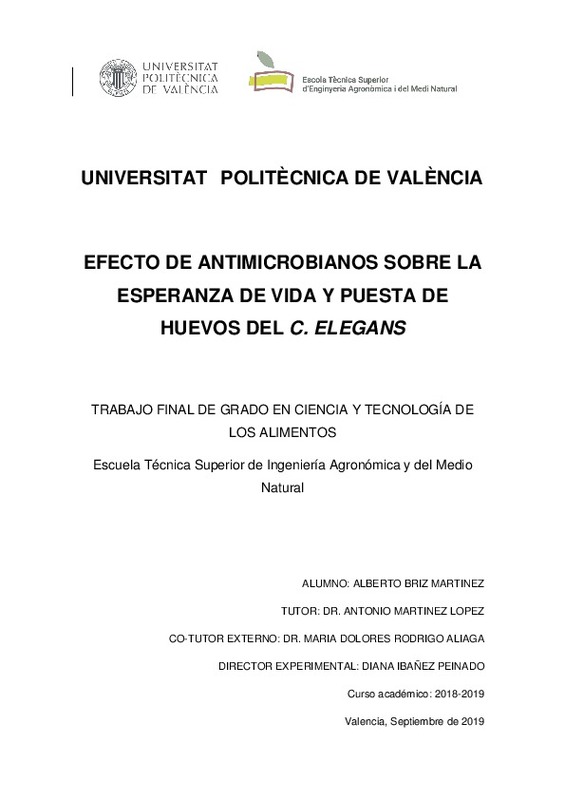JavaScript is disabled for your browser. Some features of this site may not work without it.
Buscar en RiuNet
Listar
Mi cuenta
Estadísticas
Ayuda RiuNet
Admin. UPV
Efecto de antimicrobianos sobre la esperanza de vida y puesta de huevos del C. elegans
Mostrar el registro completo del ítem
Briz Martínez, A. (2019). Efecto de antimicrobianos sobre la esperanza de vida y puesta de huevos del C. elegans. http://hdl.handle.net/10251/126830
Por favor, use este identificador para citar o enlazar este ítem: http://hdl.handle.net/10251/126830
Ficheros en el ítem
Metadatos del ítem
| Título: | Efecto de antimicrobianos sobre la esperanza de vida y puesta de huevos del C. elegans | |||
| Autor: | Briz Martínez, Alberto | |||
| Director(es): | Rodrigo Aliaga, María Dolores Ibañez Peinado, Diana | |||
| Entidad UPV: |
|
|||
| Fecha acto/lectura: |
|
|||
| Resumen: |
[ES] El objetivo de este estudio fue evaluar el efecto del quitosano de insecto sobre una
población de Caenorhabditis elegans desde el punto de vista de su esperanza de vida
y su pauta de puesta de huevos.
Se observó ...[+]
[EN] The aim of this study was to evaluate the effect of insect chitosan on a population of
Caenorhabditis elegans from the point of view of their life expectancy and their pattern
of egg layinhg.
It was observed that ...[+]
|
|||
| Palabras clave: |
|
|||
| Derechos de uso: | Reserva de todos los derechos | |||
| Editorial: |
|
|||
| Titulación: |
|
|||
| Tipo: |
|
recommendations
Este ítem aparece en la(s) siguiente(s) colección(ones)
-
ETSIAMN - Trabajos académicos [3545]
Escuela Técnica Superior de Ingeniería Agronómica y del Medio Natural







